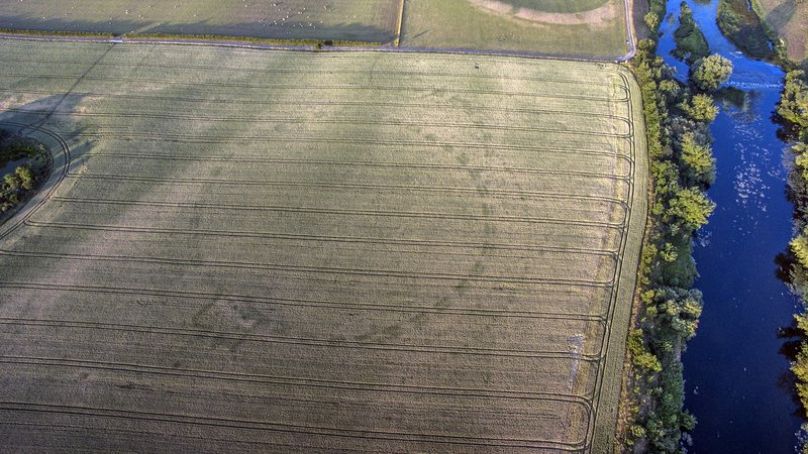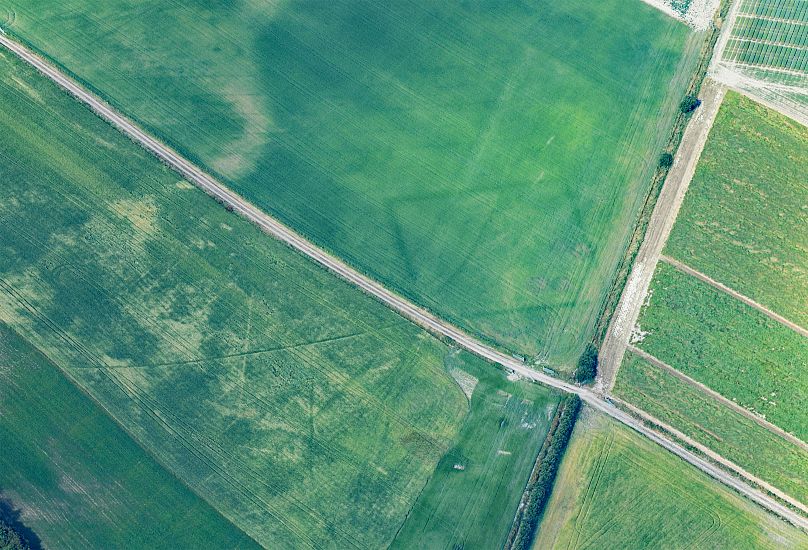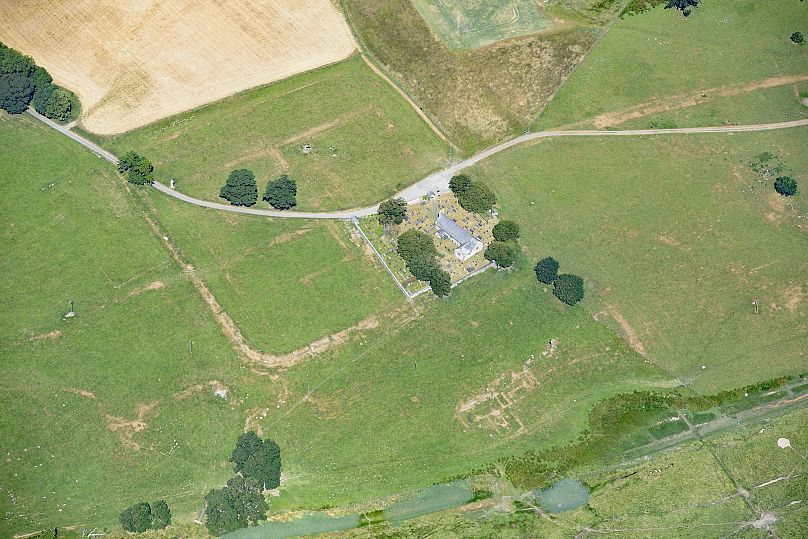Ancient monuments and Roman settlements have been revealed by the UK's and Ireland's heatwave. The dry spell has left parched fields with unmistakable "crop marks" painted into the landscape.
A spell of exceptionally dry and hot weather has revealed several archaeological and historical sites across England, Wales and Ireland.
In the past few weeks, temperatures have risen to above 30 degrees (the average is usually 19 degrees) and the vegetation on the surface has dried out as a result. Grasslands are withering and as a result, aerial images are showing outlines of ancient civilisations emerging from once-green fields.
A remarkable number of crop marks have appeared, sometimes showing the presence of buried remains that were unnoticed for decades or, in the case of the new discoveries, for centuries.
One such discovery is a circular enclosure, located 1 km from an Irish megalithic passage tomb, Newgrange. It was discovered by historian Anthony Murphy of Mythical Ireland, who was flying his drone over the Boyne Valley, County Meath, when he spotted a circular shape in the field.
Murphy said they started taking images of the circle and knew that they were seeing something "very, very special".
“We also knew there was no recorded monument in that spot,” he told Euronews. “We didn’t initially know exactly what it was but we suspected it was a henge or enclosure.
"There are several in the immediate vicinity. As soon as we landed, we sent some images to some archaeologists, and they were immediately very excited about what we had discovered.”
It is estimated that this ancient henge was built around 5,000 years ago.
Helen Winton, Aerial Investigation and Mapping Manager at Historic England, said the dry weather is a great time for aerial archaeologists as it allows us to "see beneath the soil" as crop marks form faster and are better defined when the soil has less moisture content.
In England, the heatwave has resulted in the outline of the Victorian formal garden at Gawthorpe Hall re-emerging on its front lawn. Gawthorpe Hall is a National Trust attraction in the north-west, and the layout of the Italian style garden at the front of the building is showing through the current lawn, creating a "ghost garden".
The garden was redesigned in the 1850s, but it became too difficult to maintain after World War II, and was removed in 1946.
The heatwave in Wales has also provided perfect conditions for archaeological aerial photography. The UK's Royal Commission on the Ancient and Historical Monuments of Wales has published some recent aerial shots of cropmarks and ancient ruins — before they disappear when it next rains.
Parts of North Wales are "exceptionally dry", the commission said, leading to the exposure of cropmarks showing Bronze Age barrows and prehistoric settlements across the Llyn Peninsula.
A newly discovered early medieval cemetery of square barrows spotted in south Gwynedd was "very rare" in Wales.
These new discoveries include a Roman fortlet near Magor, which emerged in ripening crops, and crop marks of a prehistoric or Roman farm near Langstone in Newport.
Dr Toby Driver, Senior Aerial Investigator, said; "I’ve not seen conditions like this since I took over the archaeological flying at the Royal Commission in 1997.
So much new archaeology is showing it is incredible; the urgent work in the air now will lead to months of research in the office in the winter months to map and record all the sites which have been seen, and reveal their true significance."














